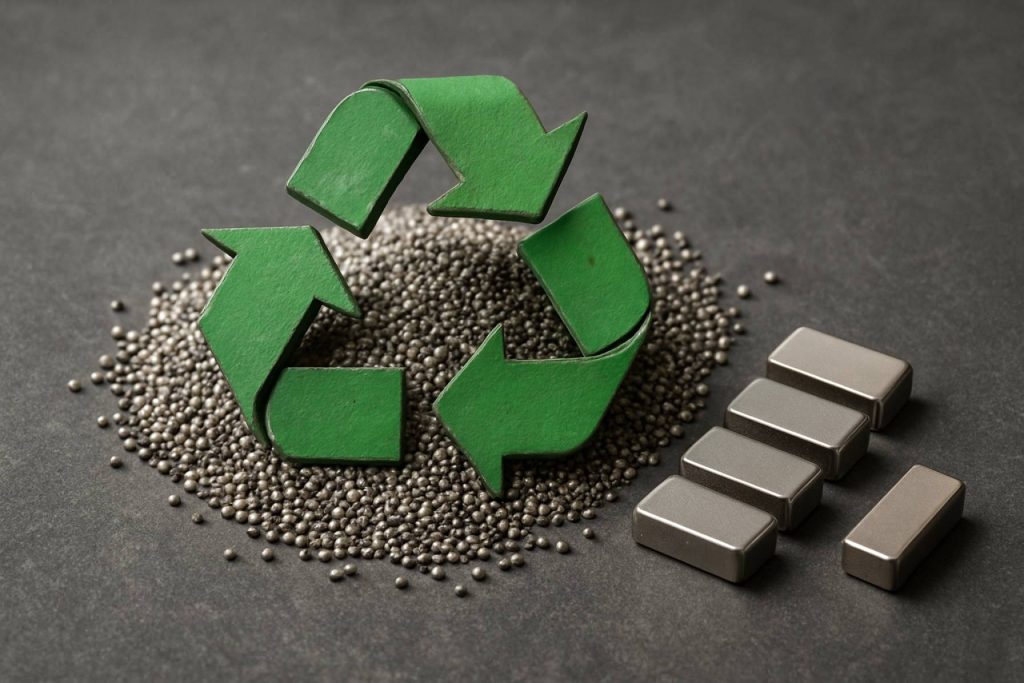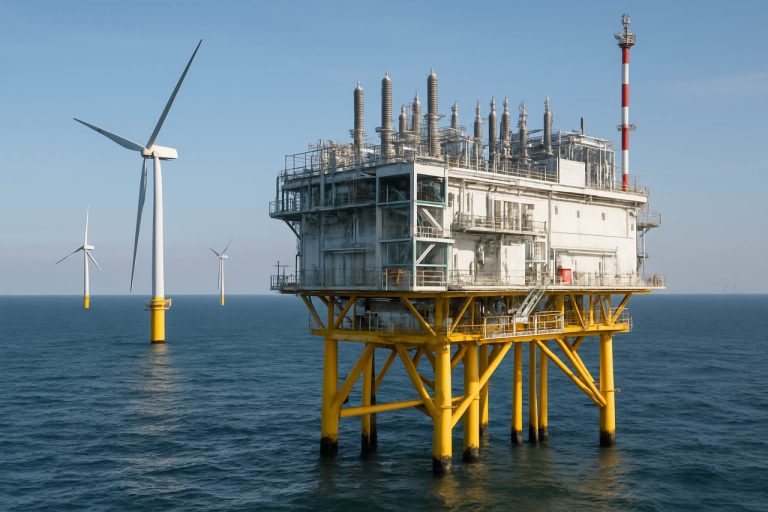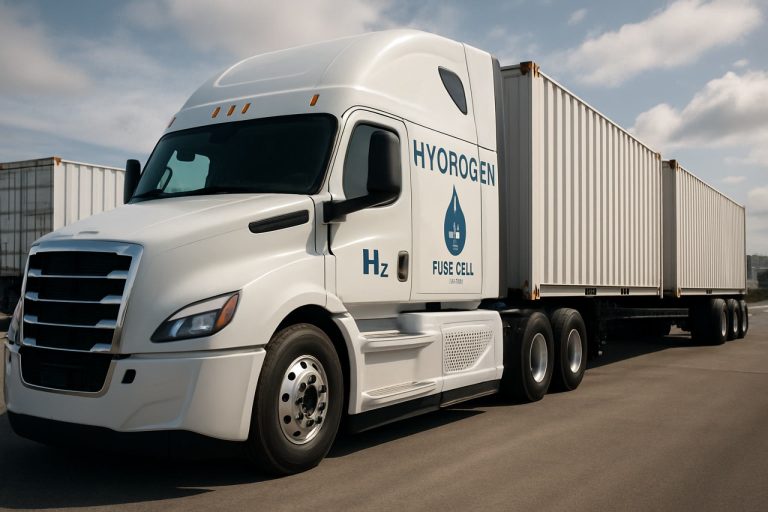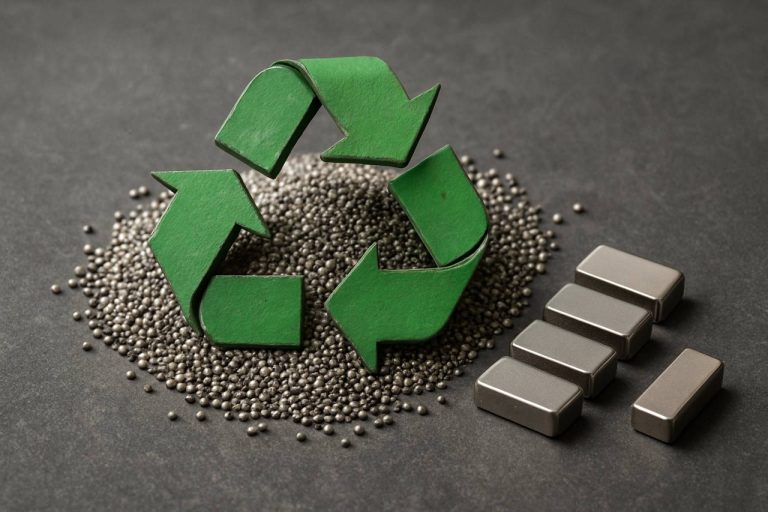
Rare-Earth Materials Recycling Industry Report 2025: Market Dynamics, Technology Innovations, and Strategic Forecasts. Explore Key Trends, Regional Insights, and Growth Opportunities Shaping the Next 5 Years.
- Executive Summary and Market Overview
- Key Market Drivers and Restraints
- Technology Trends and Innovations in Rare-Earth Recycling
- Competitive Landscape and Leading Players
- Market Size, Growth Forecasts, and CAGR Analysis (2025–2030)
- Regional Analysis: North America, Europe, Asia-Pacific, and Rest of World
- Challenges, Risks, and Regulatory Environment
- Opportunities and Strategic Recommendations
- Future Outlook: Emerging Trends and Long-Term Projections
- Sources & References
Executive Summary and Market Overview
The rare-earth materials recycling market is poised for significant growth in 2025, driven by escalating demand for sustainable supply chains and the critical role of rare-earth elements (REEs) in advanced technologies. Rare-earth materials, including neodymium, dysprosium, and terbium, are essential for manufacturing permanent magnets, electric vehicle (EV) motors, wind turbines, and various electronics. As global consumption of these technologies accelerates, concerns over resource scarcity, geopolitical supply risks, and environmental impacts of primary mining have intensified, positioning recycling as a strategic imperative.
In 2025, the global rare-earth materials recycling market is projected to reach a value of approximately USD 500 million, with a compound annual growth rate (CAGR) exceeding 8% from 2023 to 2028, according to MarketsandMarkets. The Asia-Pacific region, led by China, Japan, and South Korea, dominates both consumption and recycling initiatives, while Europe and North America are rapidly scaling up investments in circular economy solutions to reduce import dependency and meet regulatory targets.
Key market drivers in 2025 include:
- Policy and Regulation: The European Union’s Critical Raw Materials Act and the U.S. Inflation Reduction Act are incentivizing domestic recycling and closed-loop supply chains, fostering public-private partnerships and funding for R&D (European Commission).
- Technological Advancements: Innovations in hydrometallurgical and pyrometallurgical processes are improving recovery rates and economic viability, with companies like Umicore and Recycletech leading pilot projects for magnet-to-magnet recycling.
- Supply Chain Security: OEMs in the automotive and electronics sectors are integrating recycled REEs to mitigate supply disruptions and meet sustainability commitments (International Energy Agency).
Despite these positive trends, the market faces challenges such as collection inefficiencies, technological bottlenecks, and the need for standardized quality benchmarks for recycled materials. However, with mounting pressure to decarbonize and diversify supply, rare-earth materials recycling is set to become a cornerstone of the global green transition in 2025 and beyond.
Key Market Drivers and Restraints
The rare-earth materials recycling market in 2025 is shaped by a dynamic interplay of drivers and restraints, reflecting both the growing urgency for sustainable resource management and the persistent challenges in technology and economics.
Key Market Drivers
- Supply Chain Security and Geopolitical Tensions: The concentration of rare-earth mining and processing in a few countries, notably China, has heightened concerns over supply chain vulnerabilities. Governments and industries in the US, EU, and Japan are actively promoting recycling to reduce dependence on imports and enhance strategic autonomy (European Commission).
- Environmental Regulations and Sustainability Goals: Stringent environmental policies and corporate sustainability commitments are driving demand for recycled rare-earth elements (REEs). Recycling reduces the environmental footprint associated with primary mining, including habitat destruction, water pollution, and greenhouse gas emissions (International Energy Agency).
- Growth in Clean Energy and Electronics Sectors: The rapid expansion of electric vehicles, wind turbines, and advanced electronics is increasing demand for REEs such as neodymium, dysprosium, and terbium. Recycling is seen as a critical strategy to meet this demand sustainably (Allied Market Research).
- Technological Advancements: Innovations in separation and extraction technologies are improving the efficiency and cost-effectiveness of rare-earth recycling, making it more commercially viable (Frost & Sullivan).
Key Market Restraints
- Technical Complexity and High Costs: The recycling of rare-earth materials from end-of-life products is technically challenging due to their dispersion in complex matrices and the need for advanced separation processes. This results in higher operational costs compared to primary extraction (Organisation for Economic Co-operation and Development).
- Limited Collection and Recovery Infrastructure: The lack of efficient collection systems for end-of-life products containing REEs, such as electronics and magnets, limits the volume of recyclable material available (United Nations Environment Programme).
- Market Price Volatility: Fluctuations in the prices of primary rare-earth materials can undermine the economic incentives for recycling, especially when primary supply is abundant or prices are low (U.S. Geological Survey).
Technology Trends and Innovations in Rare-Earth Recycling
Rare-earth materials recycling is undergoing rapid technological transformation in 2025, driven by the urgent need to secure supply chains and reduce environmental impacts associated with primary mining. Innovations are emerging across the collection, separation, and purification stages, with a focus on improving recovery rates, reducing costs, and minimizing hazardous waste.
One of the most significant trends is the advancement of hydrometallurgical and solvent extraction processes. These methods, which use aqueous chemistry to selectively leach and separate rare-earth elements (REEs), are being refined to achieve higher selectivity and lower reagent consumption. Companies such as Umicore and Solvay are investing in proprietary solvent systems that can efficiently extract neodymium, dysprosium, and other critical REEs from end-of-life magnets and electronic waste.
Pyrometallurgical techniques, including direct melting and slag-based separation, are also being optimized for energy efficiency and scalability. For example, Hitachi has developed a closed-loop recycling process for rare-earth magnets, which integrates demagnetization, crushing, and selective oxidation to recover high-purity REEs with minimal material loss.
Emerging bioleaching technologies are gaining traction as a sustainable alternative. Research institutions and startups are exploring the use of specialized bacteria and fungi to mobilize rare-earth elements from waste streams, offering a low-energy, low-emission pathway for REE recovery. The National Renewable Energy Laboratory (NREL) is actively piloting bioleaching methods that target REEs in spent catalysts and phosphors.
Automation and digitalization are further enhancing the efficiency of rare-earth recycling. Advanced sensor-based sorting systems, powered by artificial intelligence, are being deployed to identify and separate REE-containing components from complex waste streams. This reduces manual labor and increases throughput, as seen in pilot projects by Sims Metal Management.
Finally, the integration of recycling into product design—so-called “design for recycling”—is becoming a priority for manufacturers. By standardizing magnet shapes and reducing the use of adhesives, companies can facilitate easier disassembly and material recovery at end-of-life, as promoted by the European Commission in its Circular Economy Action Plan.
These technological trends are positioning rare-earth recycling as a critical pillar of supply chain resilience and environmental stewardship in 2025, with ongoing R&D expected to further boost recovery rates and commercial viability.
Competitive Landscape and Leading Players
The competitive landscape of the rare-earth materials recycling market in 2025 is characterized by a mix of established industrial conglomerates, specialized recycling firms, and emerging technology startups. The sector is witnessing increased activity due to growing demand for rare-earth elements (REEs) in clean energy, electronics, and defense applications, coupled with supply chain vulnerabilities and regulatory pressures to reduce environmental impact.
Leading players in this market include Umicore, a global materials technology company with advanced capabilities in recycling end-of-life products containing rare earths, and Solvay, which operates rare-earth recycling facilities in Europe and has developed proprietary processes for extracting REEs from spent catalysts and electronic waste. LANXESS and Hitachi are also notable for their investments in rare-earth magnet recycling technologies, with Hitachi pioneering automated disassembly and separation systems for used magnets in hard disk drives and electric motors.
In North America, American Manganese Inc. has gained attention for its patented hydrometallurgical process, which enables the recovery of high-purity rare earths from scrap and end-of-life products. The company collaborates with government agencies and OEMs to scale up its technology. Meanwhile, Neo Performance Materials is expanding its recycling operations to secure a sustainable supply of REEs for its magnet manufacturing business.
Asian players, particularly in Japan and China, maintain a strong presence. Sumitomo Metal Mining and Shenghe Resources are investing in closed-loop recycling systems and partnerships with electronics manufacturers to recover rare earths from consumer and industrial waste streams. The Chinese government’s support for domestic recycling initiatives has further strengthened the position of local firms in the global market.
Startups and research-driven companies are also shaping the competitive landscape. Firms such as Urban Mining Company and Recycle Technologies are leveraging advanced separation and purification technologies to improve recovery rates and reduce costs. Strategic collaborations, joint ventures, and government-backed pilot projects are common, as companies seek to overcome technical and economic barriers to large-scale rare-earth recycling.
Market Size, Growth Forecasts, and CAGR Analysis (2025–2030)
The global rare-earth materials recycling market is poised for significant expansion between 2025 and 2030, driven by escalating demand for sustainable sourcing of critical minerals and mounting regulatory pressures to reduce environmental impact. According to projections by Allied Market Research, the rare-earth metals recycling market was valued at approximately USD 1.5 billion in 2024 and is expected to reach USD 4.2 billion by 2030, registering a compound annual growth rate (CAGR) of around 18.5% during the forecast period.
This robust growth is underpinned by several key factors. The rapid proliferation of electric vehicles (EVs), wind turbines, and advanced electronics has intensified the need for rare-earth elements such as neodymium, dysprosium, and terbium. As primary mining faces geopolitical and environmental constraints, recycling emerges as a strategic alternative to secure supply chains and meet the surging demand. MarketsandMarkets forecasts that the share of recycled rare-earth materials in the total supply will rise from less than 5% in 2025 to over 12% by 2030, reflecting both technological advancements and policy incentives.
Regionally, Asia-Pacific is expected to dominate the market, accounting for over 45% of global revenues by 2030, led by aggressive recycling initiatives in China, Japan, and South Korea. Europe is also anticipated to witness accelerated growth, with the European Union’s Critical Raw Materials Act and circular economy strategies fostering investments in rare-earth recycling infrastructure. North America, while currently lagging, is projected to increase its market share as domestic recycling capacity expands and federal funding supports innovation.
Segment-wise, the recycling of permanent magnets—used extensively in EV motors and wind turbines—will represent the largest and fastest-growing application, with a forecasted CAGR exceeding 20% through 2030. This is followed by phosphors and battery alloys, which are also expected to see substantial growth as end-of-life management practices improve and collection rates rise.
In summary, the rare-earth materials recycling market is set for dynamic growth from 2025 to 2030, propelled by supply chain security concerns, regulatory mandates, and the global shift toward clean technologies. Market participants are likely to benefit from early investments in advanced recycling processes and strategic partnerships across the value chain, as the industry transitions from niche to mainstream status.
Regional Analysis: North America, Europe, Asia-Pacific, and Rest of World
The global rare-earth materials recycling market in 2025 is characterized by significant regional disparities, shaped by policy frameworks, technological capabilities, and supply chain dynamics across North America, Europe, Asia-Pacific, and the Rest of the World.
- North America: The United States and Canada are intensifying efforts to reduce reliance on primary rare-earth imports, particularly from China. In 2025, government-backed initiatives and funding for recycling infrastructure are accelerating, with a focus on recovering neodymium, dysprosium, and other critical elements from end-of-life electronics and magnets. The U.S. Department of Energy is supporting pilot projects and public-private partnerships, while companies like Urban Mining Company are scaling up commercial recycling operations. However, the region still faces challenges in collection logistics and economic viability compared to primary extraction.
- Europe: Europe leads in regulatory-driven recycling, propelled by the European Green Deal and the European Commission’s Critical Raw Materials Act. In 2025, stringent e-waste directives and extended producer responsibility schemes are boosting collection rates and investment in advanced separation technologies. Countries like Germany, France, and Sweden are home to innovative recycling facilities, such as Umicore and Relief Materials. The region’s focus on circular economy principles is fostering cross-sector collaboration, though high operational costs and limited domestic rare-earth waste streams remain hurdles.
- Asia-Pacific: Dominated by China, Japan, and South Korea, the Asia-Pacific region is both the largest generator and recycler of rare-earth materials. In 2025, China’s state-backed recycling programs and industrial clusters are driving high recovery rates, with companies like Grirem Advanced Materials leading the sector. Japan’s advanced urban mining initiatives, supported by the Ministry of Economy, Trade and Industry (METI), are focused on extracting rare earths from automotive and electronics waste. Despite rapid growth, the region faces environmental concerns and regulatory inconsistencies across countries.
- Rest of World: Other regions, including Latin America, Africa, and the Middle East, are in nascent stages of rare-earth recycling. In 2025, limited infrastructure and investment constrain market development, though rising awareness and international partnerships are laying groundwork for future growth. Pilot projects, often supported by organizations like the World Bank, are exploring the feasibility of integrating recycling into local value chains.
Overall, regional dynamics in 2025 reflect a convergence of policy, technology, and market forces, with Asia-Pacific and Europe at the forefront of rare-earth materials recycling, while North America and the Rest of the World work to close the gap through targeted investments and regulatory reforms.
Challenges, Risks, and Regulatory Environment
The recycling of rare-earth materials faces a complex array of challenges, risks, and regulatory hurdles that are expected to persist into 2025. One of the primary technical challenges is the difficulty in efficiently separating and purifying rare-earth elements (REEs) from end-of-life products, such as magnets, batteries, and electronic waste. The recycling processes often require advanced hydrometallurgical or pyrometallurgical techniques, which can be energy-intensive, costly, and generate hazardous waste streams. The lack of standardized product design and labeling further complicates the identification and extraction of REEs from diverse waste streams, reducing overall recovery rates and economic viability.
Market risks are also significant. The volatility of rare-earth prices, driven by geopolitical tensions and supply chain disruptions, can undermine the financial stability of recycling operations. For instance, sudden drops in primary REE prices may render recycling economically unattractive, discouraging investment in new facilities and technologies. Additionally, the limited scale of current recycling infrastructure means that supply from secondary sources remains a small fraction of global demand, making it difficult for recyclers to achieve economies of scale or secure long-term contracts with downstream users.
On the regulatory front, the landscape is fragmented and rapidly evolving. In the European Union, the Critical Raw Materials Act and the Waste Electrical and Electronic Equipment (WEEE) Directive are pushing for higher recycling rates and stricter reporting requirements, but implementation varies across member states, creating compliance challenges for multinational recyclers. In the United States, policy support is growing, with initiatives from the U.S. Department of Energy and U.S. Environmental Protection Agency to fund research and pilot projects, yet there is no unified federal mandate for rare-earth recycling. In Asia, China remains the dominant player in both primary production and recycling, but its export controls and evolving environmental regulations introduce uncertainty for global supply chains.
- Technical complexity and high costs of separation and purification
- Price volatility and uncertain market demand for recycled REEs
- Fragmented and inconsistent regulatory frameworks across regions
- Environmental and safety risks associated with recycling processes
Addressing these challenges will require coordinated policy action, investment in advanced recycling technologies, and greater collaboration between manufacturers, recyclers, and regulators. As the global push for supply chain resilience and sustainability intensifies, the regulatory environment is likely to become more stringent, but also more supportive of innovation in rare-earth materials recycling International Energy Agency.
Opportunities and Strategic Recommendations
The rare-earth materials recycling sector is poised for significant growth in 2025, driven by escalating demand for sustainable supply chains and the critical role of rare earths in clean energy, electronics, and defense industries. As global consumption of rare earth elements (REEs) such as neodymium, dysprosium, and terbium continues to rise, recycling presents a strategic opportunity to mitigate supply risks, reduce environmental impact, and support circular economy initiatives.
Opportunities:
- Supply Chain Resilience: With over 60% of global rare earth production concentrated in China, recycling offers a pathway for other regions to reduce dependency and enhance supply security. The European Union and the United States have both identified rare earth recycling as a strategic priority in their critical raw materials strategies (European Commission, U.S. Department of Energy).
- Technological Advancements: Innovations in hydrometallurgical and pyrometallurgical processes are improving recovery rates and cost-effectiveness. Companies such as Umicore and RECYCLING TECHNOLOGY are investing in advanced separation and purification technologies, enabling the extraction of high-purity rare earths from end-of-life products.
- Regulatory Incentives: Governments are introducing policies and funding to encourage recycling. The EU’s Critical Raw Materials Act and the U.S. Infrastructure Investment and Jobs Act both allocate resources to rare earth recycling projects (European Commission, U.S. Congress).
- Growing E-Waste Streams: The proliferation of electric vehicles, wind turbines, and consumer electronics is generating substantial volumes of end-of-life products containing rare earths, creating a robust feedstock for recycling operations (International Energy Agency).
Strategic Recommendations:
- Invest in R&D: Stakeholders should prioritize research into efficient, scalable recycling technologies, particularly for complex products like magnets and batteries.
- Forge Industry Partnerships: Collaboration between manufacturers, recyclers, and policymakers can streamline collection systems and ensure a steady supply of recyclable materials.
- Develop Traceability Systems: Implementing digital tracking for rare earth-containing products can enhance material recovery and compliance with regulatory requirements.
- Expand Public Awareness: Education campaigns can increase collection rates and support consumer participation in recycling programs.
By capitalizing on these opportunities and adopting targeted strategies, stakeholders can position themselves at the forefront of the rare-earth materials recycling market in 2025, contributing to both economic resilience and environmental sustainability.
Future Outlook: Emerging Trends and Long-Term Projections
The future outlook for rare-earth materials recycling in 2025 is shaped by accelerating technological innovation, evolving regulatory frameworks, and intensifying supply chain pressures. As global demand for rare-earth elements (REEs) continues to surge—driven by the proliferation of electric vehicles, wind turbines, and advanced electronics—recycling is emerging as a critical strategy to mitigate resource scarcity and reduce environmental impact.
One of the most significant trends is the rapid advancement of recycling technologies. Companies and research institutions are investing in more efficient hydrometallurgical and pyrometallurgical processes, as well as novel solvent extraction and bioleaching techniques, to improve recovery rates and reduce costs. For example, Umicore and Urban Mining Company are scaling up operations to process end-of-life magnets and electronic waste, aiming to close the loop on critical REEs such as neodymium, dysprosium, and praseodymium.
Policy developments are also shaping the market. The European Union’s Critical Raw Materials Act and the U.S. Department of Energy’s funding initiatives are incentivizing domestic recycling infrastructure and R&D, aiming to reduce reliance on imports from dominant suppliers like China (European Commission; U.S. Department of Energy). These policies are expected to drive public-private partnerships and foster a more resilient supply chain.
Market projections indicate robust growth for the rare-earth recycling sector. According to MarketsandMarkets, the global rare-earth recycling market is anticipated to grow at a CAGR exceeding 8% through 2025, with Asia-Pacific and Europe leading adoption due to strong manufacturing bases and supportive regulations. The automotive and electronics industries are expected to be the primary end-users, as manufacturers seek to secure sustainable material sources and meet ESG targets.
Looking further ahead, the integration of digital technologies—such as AI-driven sorting and blockchain-based traceability—will likely enhance the efficiency and transparency of recycling operations. However, challenges remain, including the need for standardized collection systems and the economic viability of recycling low-concentration waste streams. Overall, rare-earth materials recycling is poised for significant expansion in 2025 and beyond, underpinned by innovation, policy support, and mounting sustainability imperatives.
Sources & References
- MarketsandMarkets
- European Commission
- Umicore
- Recycletech
- International Energy Agency
- Allied Market Research
- Frost & Sullivan
- United Nations Environment Programme
- Hitachi
- National Renewable Energy Laboratory (NREL)
- Sims Metal Management
- LANXESS
- American Manganese Inc.
- Neo Performance Materials
- Sumitomo Metal Mining
- Shenghe Resources
- Urban Mining Company
- Recycle Technologies
- World Bank



